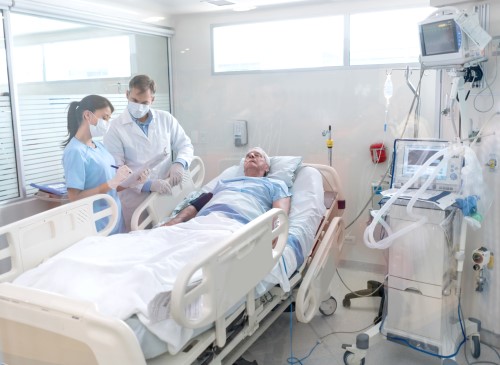MedWAR: Where Medicine Meets the Great Outdoors
Tyler Rigdon, MSIV – California University of Science and Medicine
EMRA MSC West Coordinator, 2021-2022
“Carry the vaccine however you would like during the course, but whatever you do- do NOT break it,” the announcer exclaimed across the megaphone. My teammate looked back at me, handing me a pearly white orb with a glimmer of laughter in his eyes, “You signed us up for this, it’s your responsibility”. The “vaccine” was an egg. I shook it, pondering if it was fake, hard-boiled, or possibly raw? I tucked the egg into my pocket. A few seconds later the buzzer sounded, signaling the start of the race. MedWAR had begun.
MedWAR, or Medical Wilderness Adventure Race, is advertised as an off-road triathlon that also consists of various Wilderness Medicine challenges. The race has blossomed into an extremely popular event for adrenaline seekers, outdoor enthusiasts, and healthcare-minded individuals with a desire to test their wilderness medicine knowledge in an active way. Each race is unique, and they are held in multiple areas throughout the United States. I was fortunate enough to take part in the Lake Tahoe race, consisting of 5 miles of kayaking, 5 miles of foot-based work (hiking or running), and 15 miles of mountain biking. The goal of MedWAR is to finish as quickly as possible while also completing the wilderness medicine challenges throughout. At the end of the race, points are tallied up based upon how fast a team finishes in addition to how well they complete each wilderness medicine challenge; the team with the most points wins.
As a second year medical student at the time, I found preparing myself and my eleven other classmates participating in our first MedWAR no easy task. Luckily, we were in good hands- an Emergency Medicine physician with a fellowship in Wilderness Medicine graciously volunteered to help us out. He organized a fun and thorough 4-hour “Crash Course” on popular topics. We also worked together to pack our backpacks with appropriate gear; naturally, the recommended items that MedWAR sites list are generally broad and leave the majority of items you carry up to you. In doing so, the race emphasizes the need for individuals to analyze unique geographic hazards while mimicking the importance of being prepared in real-life scenarios. This list includes anything from pressure dressing for wounds to life saving medications such as epinephrine (though it should be noted that racers typically carry just a container which marks the medication, instead of the actual medication). In hindsight, receiving help from an expert in wilderness medicine as well as taking the time to efficiently and intelligently organize our packs were two of the best things we could have done to have a great MedWAR experience.
I recall how each team took off in a flurry after the megaphone sounded, with contestants flocking as quickly as they could towards the kayaks. Out of the corner of my eye, while jumping into his kayak, I saw one egg-holder fumble and lose grip on his egg. The egg dropped by gravity, splattering its gooey insides onto the side of the kayak; that question was answered. Bright hues of orange and pink speckled the early morning skyline as we vigorously paddled the 2.5 miles to our destination. On arrival, we grounded our kayaks and made our way to the first simulation case. We found a “wounded” traveler who suffered mechanical injuries resulting in severe blood loss. As a team, we quickly performed our primary assessment by following the ABC’s- stabilizing immediate life threats such as blood loss through pressure and tourniquet application. We then proceeded with our secondary assessment and ultimately came up with a management plan. We spent little time appreciating the thrill of completing our first simulation case however, eager to continue the race.
Without spoiling too many of the details, the rest of my MedWAR experience followed much of the same pattern. The foot course led us through a beautiful landscape of dark green foliage, bordered by the lake. Our wilderness medicine knowledge continued to be tested either from simulation cases or questions that were presented to us along the path. After completing the land circuit, we jumped back into our kayaks for another 2.5 mile paddle back followed by the 15 mile mountain bike course.
Exhilarated though exhausted, one of my proudest memories was crossing the finish line (egg or “vaccine” shockingly intact and in pocket). We were met with resounding cheers from the participants, volunteers and organizers of the race, an image which truly echoes the camaraderie and spirit I love in Wilderness and Emergency Medicine. Today, as a 4th-year medical student, I look back at MedWAR as one of my favorite medical student experiences- the love for life, the appreciation for the outdoors, and the ability to entwine education into an incredibly exciting event makes MedWAR an experience that cannot be missed.
Related Content

May 26, 2023
PD Interview Saks at Crozer Chester
In the latest installment of our PD Q&A series, we are highlighting the Crozer Chester Medical Center Emergency Medicine Residency program. We spoke with the current PD Dr. Mark Saks, MD, about what makes his program unique and what he looks for in potential residents.

Apr 04, 2023
Not Just a URI: Serious Complications With Sinusitis
This case demonstrates the serious complications that can accompany sinusitis, including orbital cellulitis and septic thromboembolism with intracranial abscess. Rhinosinusitis, defined as inflammation of the mucosal lining of the nasopharynx and sinuses, is most commonly caused by a viral infection. Acute bacterial rhinosinusitis (ABRS) most commonly occurs when there is a secondary infection of the sinuses.

Jan 26, 2023
Tips for Palliative Medicine Consults in the ED
Although most evaluations and interventions focus on providing life-sustaining interventions in the ED, emergency physicians must also be prepared to provide proper care to individuals who may not benefit from the introduction of life-sustaining interventions. Emergency physicians must have knowledge of palliative care and must be able to perform palliative care when indicated. In specific situations, a palliative care consultation may be helpful in initiating and coordinating care for patients who would benefit.




